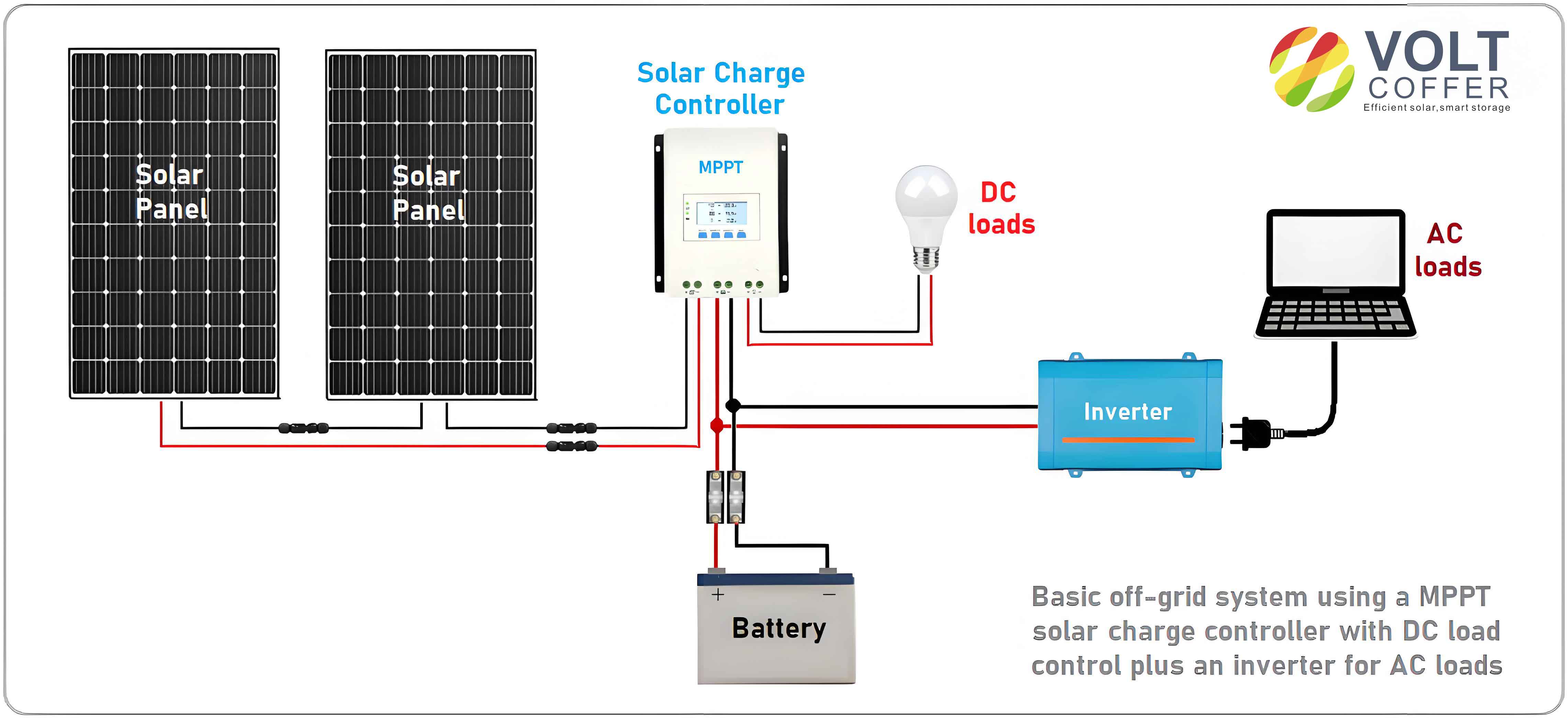This chapter delves into the analysis and enhancement of traditional Maximum Power Point Tracking (MPPT) control strategies for Photovoltaic systems. It begins by elucidating the principle of maximum power point tracking (MPPT) and constructing a model of the photovoltaic maximum power point tracking (MPPT) control circuit based on the Boost circuit. Subsequently, it dissects the principles, merits, and drawbacks of commonly employed traditional maximum power point tracking (MPPT) control methods, with a particular focus on the Perturbation Observation (PO) method for in-depth investigation. Ultimately, an improved partitioned variable step size PO method is put forward to tackle the limitations of the conventional PO method.

The maximum power point tracking (MPPT) technology is pivotal in ensuring the photovoltaic array operates at the maximum power point, thereby maximizing the conversion efficiency of solar energy. The underlying principle is rooted in the Maximum Power Transfer Theorem, which posits that the load resistance should match the equivalent internal resistance of the photovoltaic array to attain the maximum power output. The Boost circuit is frequently utilized in photovoltaic systems for maximum power point tracking (MPPT) purposes, and its operational principle revolves around adjusting the input resistance by manipulating the duty cycle of the switch. This adjustment aims to align the impedance of the photovoltaic array, facilitating maximum power transfer.
The commonly utilized traditional maximum power point tracking (MPPT) control methods encompass the Constant Voltage Method, the Conductance Increment Method, and the Perturbation Observation Method. The Constant Voltage Method, while straightforward, suffers from poor tracking accuracy and is seldom employed in practical scenarios. The Conductance Increment Method boasts superior tracking performance compared to the Perturbation Observation Method but is more intricate and demands higher hardware specifications. The Perturbation Observation Method, owing to its simplistic principle and low hardware costs, is the most widely adopted. However, it grapples with the issue of being unable to strike a balance between tracking speed and accuracy.
To ameliorate the Perturbation Observation Method, a partitioned variable step size Perturbation Observation Method is proposed. This innovative approach segments the P – U characteristic curve into distinct regions based on the proximity to the maximum power point. In regions distant from the maximum power point, a fixed large step size is employed for rapid tracking, while in areas proximate to the maximum power point, a variable small step size related to the slope is utilized for precise tracking. This dual-step strategy enables fast tracking while simultaneously reducing the steady-state oscillation and enhancing the tracking accuracy.
To validate the efficacy of the improved method, extensive simulations are conducted in MATLAB/Simulink. The results unequivocally demonstrate that the partitioned variable step size Perturbation Observation Method surpasses the traditional Perturbation Observation Method in terms of tracking speed and accuracy. It effectively mitigates the power oscillation and achieves stabilization at the maximum power point more expeditiously.
In addition to the above, the chapter also conducts a thorough analysis of the limitations of the Perturbation Observation Method in the context of partial shading. When the photovoltaic array is subjected to partial shading, the P – U characteristic curve may exhibit multiple peaks. In such instances, the Perturbation Observation Method may get trapped in the local maximum power point, failing to track the global maximum power point.
To illustrate the differences and characteristics of these control methods more clearly, the following table provides a summary comparison:
| Control Method | Principle | Advantages | Disadvantages |
|---|---|---|---|
| Constant Voltage Method | Keeps the voltage constant at an approximate maximum power point voltage | Simple and easy to implement | Poor tracking accuracy in the presence of changing environmental conditions |
| Conductance Increment Method | Solves the derivative of the P – U characteristic curve to track the maximum power point | Better tracking performance than PO | More complex calculations and higher sensor accuracy requirements |
| Perturbation Observation Method | Adjusts the output voltage based on the change in power after perturbation | Simple principle and low hardware cost | Unable to balance tracking speed and accuracy, prone to failure in partial shading |
| Partitioned Variable Step Size PO Method | Divides the P – U curve into regions and uses different step sizes for tracking | Faster tracking, reduced steady-state oscillation, improved accuracy | Requires careful selection of step sizes and region boundaries |
Overall, this chapter provides a comprehensive analysis of traditional maximum power point tracking (MPPT) control strategies and their improvements, laying a solid foundation for further research and development in the field of maximum power point tracking (MPPT) control strategies for photovoltaic systems. By addressing the limitations of existing methods and proposing innovative solutions, it contributes to the advancement of efficient and reliable photovoltaic power generation.
